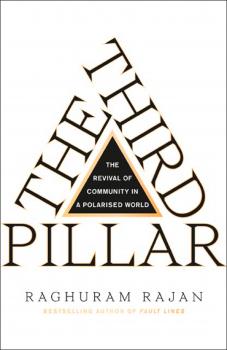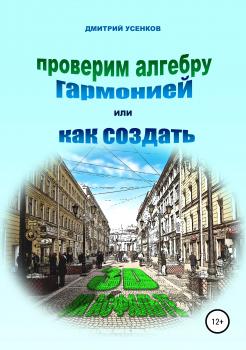Техническая литература
Различные книги в жанре Техническая литератураКурс «Основы выбора и применения материалов для трубопроводной арматуры»
Модуль "Системный инжиниринг литейных сталей для криогенной арматуры" входит в общий курс "Основы выбора и применения материалов для трубопроводной арматуры" и является частью специализации "Инжиниринг и применение трубопроводной арматуры" системы дополнительного профессионального образования в арматурной отрасли. Курс может быть полезен для специалистов-материаловедов, специализирующихся на литых материалах, разработчиков арматуры, специалистов по эксплуатации арматуры предприятий-потребителей, технических специалистов, специалистов по развитию арматурных и литейных предприятий.
The Third Pillar: How Markets and the State are Leaving Communities Behind
From one of the most important economic thinkers of our time, a brilliant and far-seeing analysis of the current populist backlash against globalization and how revitalising community can save liberal market democracy. Raghuram Rajan, author of the 2010 FT & Goldman-Sachs Book of the Year Fault Lines, has an unparalleled vantage point onto the social and economic consequences of globalization and their ultimate effect on politics and society. In The Third Pillar he offers up a magnificent big-picture framework for understanding how three key forces – the economy, society, and the state – interact, why things begin to break down, and how we can find our way back to a more secure and stable plane.The ‘third pillar’ of the title is society. Economists all too often understand their field as the relationship between the market and government, and leave social issues for other people. That's not just myopic, Rajan argues; it's dangerous. All economics is actually socioeconomics – all markets are embedded in a web of human relations, values and norms. As he shows, throughout history, technological innovations have ripped the market out of old webs and led to violent backlashes, and to what we now call populism. Eventually, a new equilibrium is reached, but it can be ugly and messy, especially if done wrong. Right now, we're doing it wrong. As markets scale up, government scales up with it, concentrating economic and political power in flourishing central hubs and leaving the periphery to decompose, figuratively and even literally. Instead, Rajan offers a way to rethink the relationship between the market and civil society and argues for a return to strengthening and empowering local communities as an antidote to growing despair and unrest. The Third Pillar is a masterpiece of explication, a book that will be a classic of its kind for its offering of a wise, authoritative and humane explanation of the forces that have wrought such a sea change in our lives. His ultimate argument that decision-making has to be watered at the grass roots or our democracy will continue to wither is sure to be both provocative and agenda-setting across the world.
How to Draw a Map
How to Draw a Map is a fascinating meditation on the centuries-old art of map-making, from the first astronomical maps to the sophisticated GPS guides of today.Maps have influenced humanity in many unexpected ways: life, death, sexual reproduction, espionage, war and peace. How to Draw a Map traces the story of mapmaking – cartography – from the first scratchings on the cave wall to the detailed high-tech ‘navigator’. This is the story of human conceptions, often misconceptions, of our world. It is also a very personal story about a mapmaker’s journey through life – the exciting new perspectives and the occasional misadventures.Over the last 5,000 years societies and empires have risen and fallen; most, if not all, attempt to record their own visions of our world. In the 15th century, Europeans developed a global reach with their oceanic ships, exploring outward into the world, revealing new possibilities, peoples and opportunities. Mapmakers recorded this journey, revealing to us a window into past triumphs and disasters. The story continues into our own day when diplomats carve up our globe, presenting what we now see as the ‘modern’ world.In How to Draw a Map, father and son cartographers Alexander and Malcolm Swanston demonstrate the skill, creativity and care involved in the timeless art of creating maps – and what these artefacts reveal about the legion of mapmakers who went before us.
Проверим алгебру гармонией, или Как создать «3D на асфальте»
«3D на асфальте», «Street Art», «Мадоннари»… У этой технологии или, если хотите, искусства создания объемных изображений несколько названий. Эффектные рисунки, создаваемые художниками-энтузиастами на улицах, на стенах, на полу в помещениях, на бумаге или даже на коже в качестве «тату» удивляют и поражают воображение своей сверхреалистичностью. Хотите стать одним из таких художников? Эта книга поможет ответить на ваши вопросы, раскроет некоторые секреты «3D на асфальте» и научит вас самостоятельно создавать «3D Street Art», используя компьютер и выведенные автором формулы.
Эксплора. Прибытие
Как вы думаете, чем занимается инженер колониальной застройки? Правильно – создаёт промышленную инфраструктуру на планетах. Прибыв на планету Локус, молодой инженер обнаруживает, что общество на ней на грани коллапса: Колониальная Конституция не соблюдается, а территория поделена между враждующими альянсами с одной стороны и бандитами с другой. Вдобавок ко всем бедам столица Локуса захвачена «демонами», а сам город закрыт непроницаемым силовым полем.Инженеру придётся забыть про мирный труд и начать жить по местному правилу – «кто сильнее, тот прав».









